#aerobraking
Explore tagged Tumblr posts
Text
i am so disappointed i never knew of the terms aerobraking, hydrobraking, and lithobraking until now, but i am so so happy to now be aware of the terms aerobraking, hydrobraking, and lithobraking. i so want to use these words in a videogame in some capacity
To be fair, a lot of goofy-sounding rocketry/aerospace terminology has a legitimate nomenclatural role beyond just being silly euphemisms.
"Unplanned rapid disassembly", for example, exists as the necessary counterpart to planned rapid disassembly: sometimes a rocket is legitimately supposed to fall apart or blow up, so you need a specific term to emphasise that it wasn't supposed to do that.
Similarly, "lithobraking" was coined by analogy with aerobraking (shedding velocity via atmospheric friction) and hydrobraking (shedding velocity by landing in water), and it does have some intentional applications; the Mars Pathfinder probe, for example, was deliberately crashed into the Martian surface while surrounded by giant airbags, and reportedly bounced at least 15 times before coming to rest.
(That said, aerospace engineers absolutely do use these terms humorously as well, because engineers are just Like That.)
#reblog#this is useful#aerobraking#hydrobraking#lithobraking#so amazing#very beautiful very powerful#thank you prokopetz
4K notes
·
View notes
Text
Coming Back
A little obsessed with re-entry as a concept these days. The idea of a long cold journey that is arduous, but safe, and all that is required is to endure... followed by a few minutes of being baptized in searing white plasma, no radio communications, some outer layer you thought of as "yourself" being excised as an inevitable cost, a mostly-ballistic trajectory.
It's "mostly ballistic": once you pick your lane, once you shoot your shot, you make the last few trim adjustments with your hydrazine-or-whatever thrusters: and now you've placed your bets. There's not really anything you can do on re-entry where adding energy will help, because the fundamental problem is one of shedding energy. The speed that got you through the journey is now a hazard. You have to re-acclimate to moving slowly. You have to come back, adopt a speed that is more favorable to atmosphere and breathing and humanity, and that means aerobraking. Every part of that is basically deterministic though: too steep and the heat builds up too fast and cooks you; you couldn't absorb the change fast enough. Too shallow and the exposure to heat over dozens of minutes wears you down: you didn't rip the band-aid off fast enough, you overshot your target, you spent so long getting back to normal that you left yourself vulnerable.
So every re-entry trajectory is this Goldilocks thing where you come back, talk to some experts on the far end and say "what is the best way to finish this" and trust them. The final exam is setting your course, knuckling down, and coming through the short dark window of loneliness to a place where you can open the parachutes and splash down safely, and wait for someone to pick you up and say "welcome home. you made it."
1 note
·
View note
Text
Ludicrous speed.
Let me tell you about humans. They’re shit. No exoskeleton, they need to pour water into their face all the time, no plumage, they can’t even sense magnetism.
They’re wobbly squishy things who walk around looking at the world with jelly blobs, leaking their most important resource out of their skin.
And you hear that they’re the Galaxy’s most dangerous species.
And they’re not, they really aren’t.
The Ixnar are. The Ixnar will get halfway through a genocide before they start to wonder why they’re doing it. The Ixnar will fire relativistic weapons and not give a solitary nnuniq what they’ll hit later on down the line.
Humans? They start by coming up with a reason to be terrifying, and then they refine it as they go. See? They give you fair warning. They think about stuff. They’ll talk to you first, then do something horrifying.
But if you don’t give them that chance, then… well, that’s on you.
And I never believed that reputation. I’d worked with humans for years, and I’ve never seen them do anything more than carry stuff, sing songs, eat barbaric food and sleep. About what you’d expect from a pack animal - Useful, affable, but…. dangerous?
It is to laugh.
Anyway.
The Ixnar.
They sent a raiding party to my homeworld. I couldn’t believe it, I was in shock when their ships entered atmosphere and started firing on our cities.
I was ready to go down and help the survivors - Of course I was!
The Humans?
Well they got angry. Like angrier than they had a right to be. And they’re humans, right? They get angry, they do something with it.
They didn’t want to go down and help the survivors, they wanted to go down and murder the raiders.
You know… they actually hailed the Ixnar and asked them, begged them, even tried to trade with them to stop their attack.
The Ixnar hung up and… the Humans dropped hell on them.
In a cargo freighter. A human cargo freighter.
They love their aerobraking. So they have these huge shields and magnetic fields to manage plasma: They come in, and they trade speed for heat and then coast and shed the heat.
Not this time. I thought we were going to die - They pointed the ship at the planet, and they came down so hard I could hear the air through the hull.
We didn’t even need cabin lights.
And then… they lit the main drives. A thing no sentient would ever do in atmosphere. Because it’s suicide. Absolutely: We were already moving at fifty times faster than the speed of sound, and then they decided they needed to be faster.
And they got it. Because they were angry on behalf of people they never met. They just decided that physics didn’t matter. The hull wasn’t important. Fuel? Engines? Ha! Who cares, right? They’ll just get out and flap their arms if they need to, with a kitchen knife between their teeth.
You know what happens if a fighter skiff gets hit with a shockwave like that? They go away. They stop being anything you could call a thing.
And you know, Humans don’t send out Cargo ships without protection. I mean, their hulls alone are insane. But they also like to carry a little punitive hardware.
About as much as most species warships.
Beam weapons, ballistic slugs, missiles, Field spinners, and those fucking Polaron cannons.
Yeah, nobody has worked out how that works. They’re Polarons. And the humans figured out how to make them hurt.
And they were firing on these little warships from inside a cloud of plasma. And really that shouldn’t work at all, And they just did it anyway. It was terrifying, and I was on the inside, looking out and I was scared.
Then the humans aimed the nose at the mothership. The captain said… And I won’t stop hearing those words ever: “If the Polaron cannons won’t do it, let’s see if ramming speed will do the trick.”
And the crew cheered. They cheered!
I can only imagine the Ixnar command looking down and seeing a hole ripped in the atmosphere, seeing their skiffs flash into non existence and then a boiling finger of cloud just reaching up to point at them.
Did they even remember the human cargo ship that reached out to them? Did they even recognise the glowing white-hot dot of pure fury coming for them?
And when the Polaron cannon lit up, did they even recognise what was happening before their bridge melted?
I hope so. I hope that for a moment they realised they’d fucked up so badly that they got everyone killed and the humans were Big Mad at them.
Me? I was trying not to scream. I was pretty sure that I was going to die, but also? Die like a human. You really understand what blaze of glory means when you’re actually on fire and it doesn’t matter.
Anyway we didn’t have to kill the Ixnar by slamming into them, but the Captain had to eject the engines, and most of the hull because uh, well it was kind of on fire.
Two days later the rescue and relief team picked us up and let me tell you, we were all really drunk at that point.
But yeah.
Humans aren’t dangerous. And yes I would very much like another drink, most kind of you to offer.
80 notes
·
View notes
Text
Copy and pasting the following from a discussion of this video in a discord server I'm in, because I think it's a point worth making:
It's very annoying to see how telephone game'd the Mars Climate Orbiter failure has become.
It didn't crash into Mars, it was simply too low when it went for an aerobrake pass. It definitely didn't leave "a scar that you can see from the other orbiters". Mark is probably either thinking of Beagle 2 or Mars Polar Lander, or maybe one of the more recent unmanned lunar landers (Beresheet, maybe?).
It wasn't a mixup of inches and centimeters, it was a mixup of pound force-seconds and newton-seconds.
Lockheed weren't idiots, and it's frankly insulting to all teams involved to claim so. The actual MCO mishap investigation report -- which Mark clearly either hasn't read or hasn't read thoroughly -- clearly states throughout that while the direct cause of failure was the faulty data in the Angular Momentum Desaturation modeling file (not just incorrect units, but also formatting issues and just plain errors), the root causes were multivalent:
The ops. team were understaffed and running three missions simultaneously.
Team members were inadequately trained.
Inadequate onboard navigation ("total reliant on [the] Earth-based Deep Space Network")
Contingency maneuvers that could have saved the mission, weren't taken because the teams weren't prepared (or able to prepare) for them.
End-to-end testing of the software stack, which should have been performed beforehand, never occurred.
And more! You can read the MCO phase I mishap report here and phase II here, if you're interested in learning what actually happened, instead of just blaming Lockheed for being stupid degenerate Americans with no safety culture.
You might notice with a sense of dramatic irony that the MCO phase I report makes a lot of recommendations for the concurrent MPL program; that mission would similarly fail less than a month after the report's publication for related reasons (not the units mixup part, the other ones).
MCO was not an isolated incident and it's frankly malpractice to ignore that (by omission or otherwise). The 90s were bad for space programs, mostly down to budget pressures. The MCO phase II report goes deep into the problems with NASA "Faster, Better, Cheaper" philosophy at the time.
Let me summarize: MCO was not a failure of software design. It was not a failure of unit conversion, either. It was a failure of project management. While the course (in)corrections were what doomed MCO directly, it was always going to be something. The team running MCO simply could not have succeeded given the conditions they were in. If it was anyone's fault, it was Congress' fault for not funding the deep space program enough.
17 notes
·
View notes
Text

New SpaceTime out Wednesday
SpaceTime 20241023 Series 27 Episode 128
Scientists date the Moon's oldest impact crater
Scientists believe they’ve pinpointed the age of the massive South Pole-Aitken basin largest and oldest impact crater on the Moon finding it to be over 4.32 billion years old.


Scientists recreate the sound of Earth's magnetic polar flip
With growing evidence that the Earth’s magnetic poles are about to flip, scientists have recreated the sound of Earth's magnetic polar flip.


X-37B Space Shuttle undertakes pioneering aerobraking manoeuvre
The United States Space Force's X-37B space shuttle has just completed a novel aerobraking manoeuvre to adjust its orbit flight path around Earth.
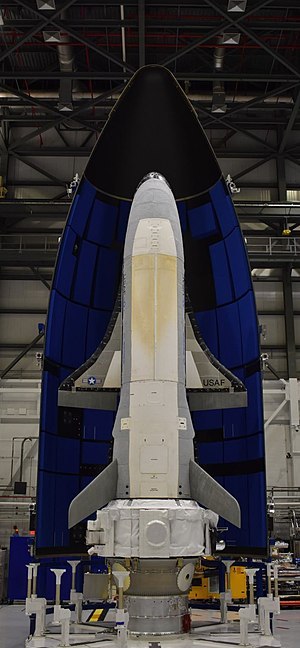
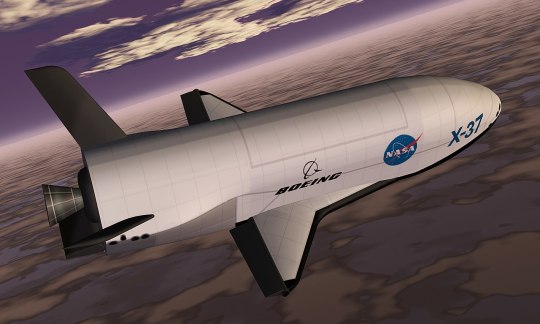

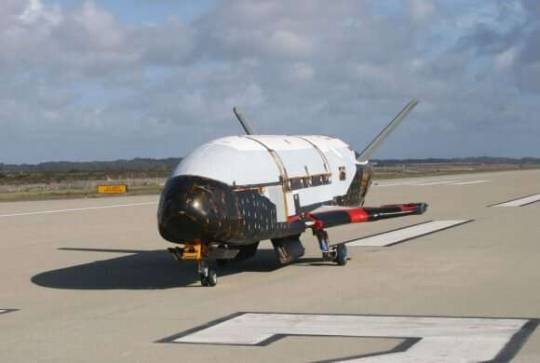
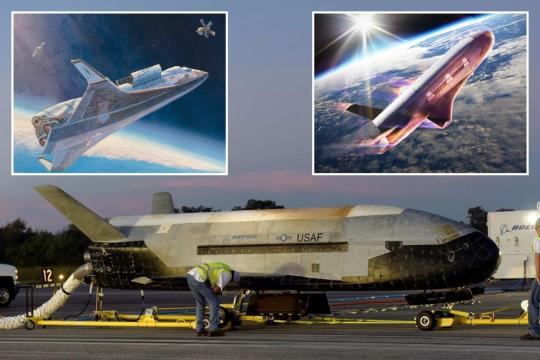
The Science Report
A new study has found that deaths tend to increase in the days after an extreme rain event.
The real health effects of Mediterranean style diets on young people.
New energy-efficient bricks using scrap materials, including glass, that are normally destined for landfill.
Alex on Tech is your car spying on you.
SpaceTime covers the latest news in astronomy & space sciences.
The show is available every Monday, Wednesday and Friday through Apple Podcasts (itunes), Stitcher, Google Podcast, Pocketcasts, SoundCloud, Bitez.com, YouTube, your favourite podcast download provider, and from www.spacetimewithstuartgary.com
SpaceTime is also broadcast through the National Science Foundation on Science Zone Radio and on both i-heart Radio and Tune-In Radio.
SpaceTime daily news blog: http://spacetimewithstuartgary.tumblr.com/
SpaceTime facebook: www.facebook.com/spacetimewithstuartgary
SpaceTime Instagram @spacetimewithstuartgary
SpaceTime twitter feed @stuartgary
SpaceTime YouTube: @SpaceTimewithStuartGary
SpaceTime -- A brief history
SpaceTime is Australia’s most popular and respected astronomy and space science news program – averaging over two million downloads every year. We’re also number five in the United States. The show reports on the latest stories and discoveries making news in astronomy, space flight, and science. SpaceTime features weekly interviews with leading Australian scientists about their research. The show began life in 1995 as ‘StarStuff’ on the Australian Broadcasting Corporation’s (ABC) NewsRadio network. Award winning investigative reporter Stuart Gary created the program during more than fifteen years as NewsRadio’s evening anchor and Science Editor. Gary’s always loved science. He studied astronomy at university and was invited to undertake a PHD in astrophysics, but instead focused on his career in journalism and radio broadcasting. Gary’s radio career stretches back some 34 years including 26 at the ABC. He worked as an announcer and music DJ in commercial radio, before becoming a journalist and eventually joining ABC News and Current Affairs. He was part of the team that set up ABC NewsRadio and became one of its first on air presenters. When asked to put his science background to use, Gary developed StarStuff which he wrote, produced and hosted, consistently achieving 9 per cent of the national Australian radio audience based on the ABC’s Nielsen ratings survey figures for the five major Australian metro markets: Sydney, Melbourne, Brisbane, Adelaide, and Perth. The StarStuff podcast was published on line by ABC Science -- achieving over 1.3 million downloads annually. However, after some 20 years, the show finally wrapped up in December 2015 following ABC funding cuts, and a redirection of available finances to increase sports and horse racing coverage. Rather than continue with the ABC, Gary resigned so that he could keep the show going independently. StarStuff was rebranded as “SpaceTime”, with the first episode being broadcast in February 2016. Over the years, SpaceTime has grown, more than doubling its former ABC audience numbers and expanding to include new segments such as the Science Report -- which provides a wrap of general science news, weekly skeptical science features, special reports looking at the latest computer and technology news, and Skywatch – which provides a monthly guide to the night skies. The show is published three times weekly (every Monday, Wednesday and Friday) and available from the United States National Science Foundation on Science Zone Radio, and through both i-heart Radio and Tune-In Radio.
#science#space#astronomy#physics#news#nasa#astrophysics#esa#spacetimewithstuartgary#starstuff#spacetime#jwst#james webb space telescope#hubble space telescope#hubble telescope#hubble
16 notes
·
View notes
Text
Every morning I go to work and apply my robot perfumes. By the end of it I smell like a mix of hot wires, machine oil, cold metal, machine-scrubbed air and the inside of a computer case. I feel like a tech priestess anointing myself with holy synthetic oils.
If anyone asks, I use:
Aerobraking and Abandoned Space Station by Fyrinnae
Electric Feel by Death & Floral
Android and Machine Intelligence(plus a tiny bit of Cyborg Queen if I’m feeling particularly cyberholy) by Aether Arts
14 notes
·
View notes
Note
favorite word?
Either the set of "Aerobraking", "Hydrobraking", "Lithobraking"; or "Concussion". with a possible runner up being "Dongle"
6 notes
·
View notes
Text


















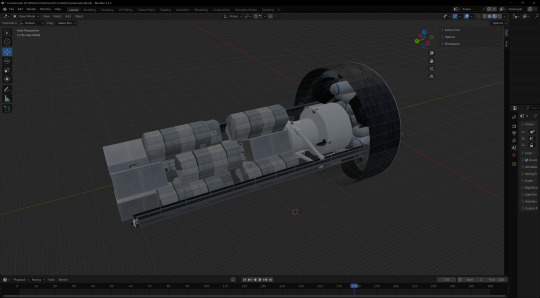
As promised, The Screwloose! Made in Kerbal Space Program with a whole lot of mods and some tasteful file editing. Theres also some screenshots of the version I'm editing in blender, that's the more canon one, but I'm still learning (and there's still more details to add) so KSP was used for initial construction and (way too many) beauty shots.
This ship was originally commissioned by the company that our OC's work for, Ribeiro Courier Services, as an experiment into the viability of aerobraking as a method of saving fuel while not increasing shipment times. It is converted from an medium-volume hauler and upon the completion of the modifications, it was officially recommissioned as the E.A.C. Fênix but that name failed to catch on with the crew who refer to it exclusively as the Screwloose. Depending on who you ask and when, this is either because it needs constant maintenance, or because R.C.S. had a screw-loose when coming up with the plan of it slowing down by slamming into the atmosphere of it's destination. Some key features of the ship are: - The heat-shield, this is what protects the ship and it's cargo during entry. It also has cutouts for the engines when they are active, and covers to protect them when they aren't - Slide mechanism, The spine (cargo rack, docking ports, habitation) of the ship and the drive section (heat-shield, engines, radiators, fuel tanks, solar panels, reaction control system) are attached through a slide plate, this makes it so that, if the cargo load on the rack is uneven, the spine can shift to maintain stability, it is crucial for safe aerobraking maneuvers. In the Blender screenshots you can see the huge actuators used to position the spine. - RCS rails, this allows the reaction control thrusters to move up and down the length of the ship, allowing it to better balance out torque with varying cargo loads. This was not originally part of the modifications R.C.S. had planed for the ship, but instead stipulated by a contract they took with an aerospace company to help fund the project.
5 notes
·
View notes
Text

The Space Shuttle's vertical tail is 27 feet high and 22 feet long at the base. It ensures the stability and the direction of the orbiter in flight. It supports the mobiles elements which are used to oriente the orbiter or to slow down (areobreak). These last ones are jointed with four pieces and controlled by an electrical engine. The box of the vertical stabilizer is made of two strengten pieces mashin-finished from one piece, panels. The box is settled to the rear part of the fuselage by ten bolts. The mobile parts (direction and aerobrake) are made of aluminium alloy and panels in honeycomb structure.
All were built by Fairchild Republic Company, in Long Island, New York.
source
Boeing Images: B1230615
43 notes
·
View notes
Text
So assuming my google skills and graphs from the early Apollo missions get me close, the required dV to return from the surface of the moon is roughly 3,000-4,000m/s*. That's how much something has to accelerate (slow down) from the moon's orbit and "fall" to earth. We'll pretend the atmosphere doesn't exist otherwise the bullet would instantly vaporize and this whole fun mission would be impossible.
From another quick google, most high powered rifles max out at around 1,200m/s muzzle velocity, and a theoretical "perfect" system that transfers all of the explosive energy into projectile velocity would maybe get up to just over 1,800m/s. That means that we would need to use something that isn't a gun, because we'd shoot a bullet that would slow down, and just fly toward the earth, but end up missing by about half the distance to the moon.
So let's try something else. How about a rail gun? Another google indicates current rail guns can hit upwards of 2,500m/s at sea level, and I'd be willing to bet in a vacuum and with some fancy classified tech, you could easily hit the 3,000-4,000m/s required! Aiming? Who cares about aiming, at that speed you're going to hit a lot more than a tree.
*there's some error here because the Apollo missions relied on aerobraking, using the atmosphere to slow down, so they didn't actually need to hit earth, just get close to it. The atmospheric resistance did the rest and slowed them down enough to land. Since we're ignoring atmospheric resistance so that the bullet doesn't vaporize instantly, our numbers are a bit higher than theirs were. If anyone wants to correct me with more accurate numbers, please do.
I want to be the first person on the moon to shoot a sniper rifle at earth and hit a wasp nest. my whole life so far is leading up to that moment
941K notes
·
View notes
Text
Space Force's stealthy X-37B space plane will reach 1 year in orbit
The US Space Force X-37B Orbital Test Vehicle (OTV-7) has quietly passed one year of flight time. The aerobrake technology is working, a method to change its behavior around Ground floorand secure delivery of its attached service unit. Launched in December 2023, it will put the military’s space probe into a higher orbit than any previous space mission – into the highest Earth orbit ever. Since…

View On WordPress
0 notes
Text

TODAY IN HISTORY: December 6, 2006 - NASA revealed photographs taken by Mars Global Surveyor suggesting the presence of liquid water on Mars. MGS was a global mapping mission that examined the entire planet, from the ionosphere down through the atmosphere to the surface. As part of the larger Mars Exploration Program, Mars Global Surveyor performed atmospheric monitoring for sister orbiters during aerobraking, and helped Mars rovers and lander missions by identifying potential landing sites and relaying surface telemetry.
0 notes
Text
The Secretive Spaceplane of the U.S. Space Force Conducts First-of-Its-Kind Maneuvers | Smithsonian
"The Secretive Spaceplane of the U.S. Space Force Conducts First-of-Its-Kind Maneuvers | Smithsonian" https://www.smithsonianmag.com/smart-news/the-secretive-spaceplane-of-the-us-space-force-conducts-first-of-its-kind-maneuvers-180985425/
0 notes
Text
"That sounded like too much work, so I tried using a liter of powdered starfish instead."
"You j..."
"Oh! And I mixed in some iron-filings 'cause I figured stardust was more, ya'know, mineral-y, than actual starfish."
"Hang on, I'm still stuck on the part where you found a magic cookbook."
"At this point I'm thinking more 'sufficiently advanced', but yeah."
"Fair. But still, you found it. You made multiple dishes from it, enough to figure out the next-page trick."
"Yeah, they're really tasty! I think I use it for maybe four out of five meals, now."
"What's the fifth meal?"
"Coffee."
"Huh. Anyway, your magic book"
"Sufficiently Advanced"
"Too many syllables. Your 'magic' book, gives a design for a spaceship."
"Yep."
"And you decide not to build it?"
"Yep."
"WHY NOT?"
"Ok, two reasons: First, trying to get my hands on that much uranium would probably get me shot."
"Avoid lead poisoning, fair. And?"
"And second, the rocket design includes an ascent stage, but no way to come back down. No aerobrake shell, no parachute, nothing."
"Ok? Bit of an oversight there, but I mean if you're already building..."
"AND! And, the book is titled How To Live A Delicious Life."
"... I don't follow."
"To Serve Man?"
"What?"
"Second base."
"What?"
"You need to learn your classics. Point is, I think the ship is meant to be one-way."
"...sure? Why?"
"I think its the lure on the anglerfish. I think the book is bait."
"What does... Oh, I get it. So what, the rest of the book, those recipes, are just to get your guard down?"
"Some, yeah. Maybe also as seasoning. Like, um, those Japanese cows that are fed the special grass. Is that a thing? My brain is telling me that's a thing."
"..."
"..."
"WHY ARE YOU STILL EATING THOSE RECIPES?"
"Because they're delicious."
You discovered an abandoned one thousand page cookbook one day, and strangely, you found that you can’t flip to the next recipe without making the current dish. Flipping the page, you see the next dish calls for a liter of star dust and gives a “simple” explanation of how to build a starship.
#so the joke is#that aliens dropped the book#and shared spaceship designs#because they want to eat humans#fiction
17K notes
·
View notes
Text
제목 제안: "신비로운 우주 탐험의 선구자, 보잉의 X-37B 우주 비행기" 안녕하세요, 우주 탐험에 열정적인 블로그 독자 여러분! 오늘
숨겨진 우주 탐험의 문 – 보잉의 X-37B 우주 비행기 안녕하세요, 여러분! 오늘은 우주 탐험의 새로운 장을 열고 있는 보잉의 비밀스러운 X-37B 우주 비행기에 대해 이야기해 보려고 합니다. 우리가 아직 잘 모르는 이 작은 우주선이 최근 스릴 넘치는 공중 제동(aerobraking) 기법을 통해 우주 탐험의 새로운 가능성을 열어가고 있습니다. 어드밴스드 에어로브레이킹, 연료를 아끼며 우주를 누비다 보잉의 X-37B는 현재 지구의 고도로 타원형 궤도를 돌고 있는 가운데 고급 공중 제동 기법을 사용하여 궤도를 낮추고 있습니다. 이 과정을 통해 X-37B는 아주 적은 양의 연료만 사용하면서도 궤도를 변경할 수 있습니다. 이에 대해 보잉의 엔지니어 John Ealy는 "공중 제동을 사용하면 대기 항력을…
0 notes
Text
0 notes